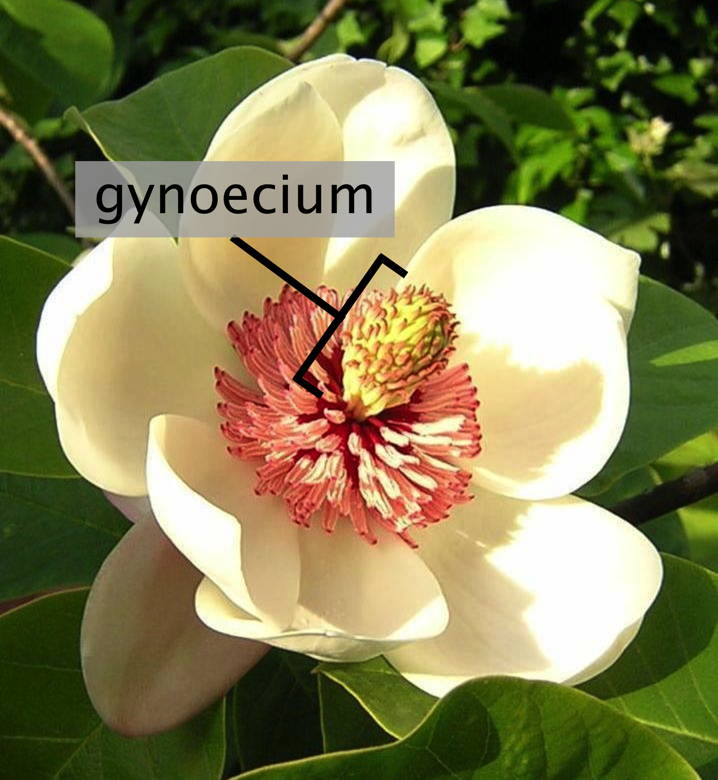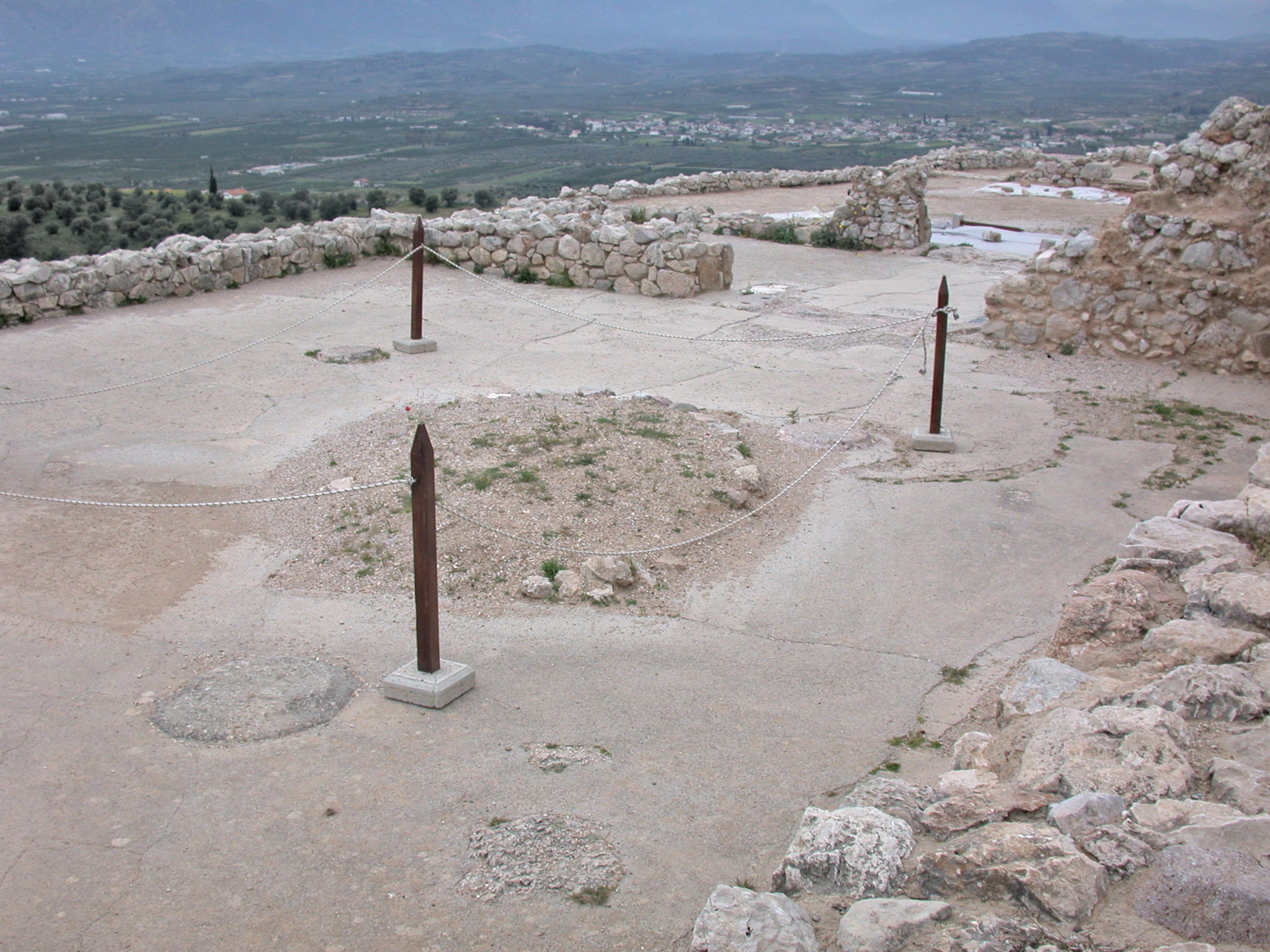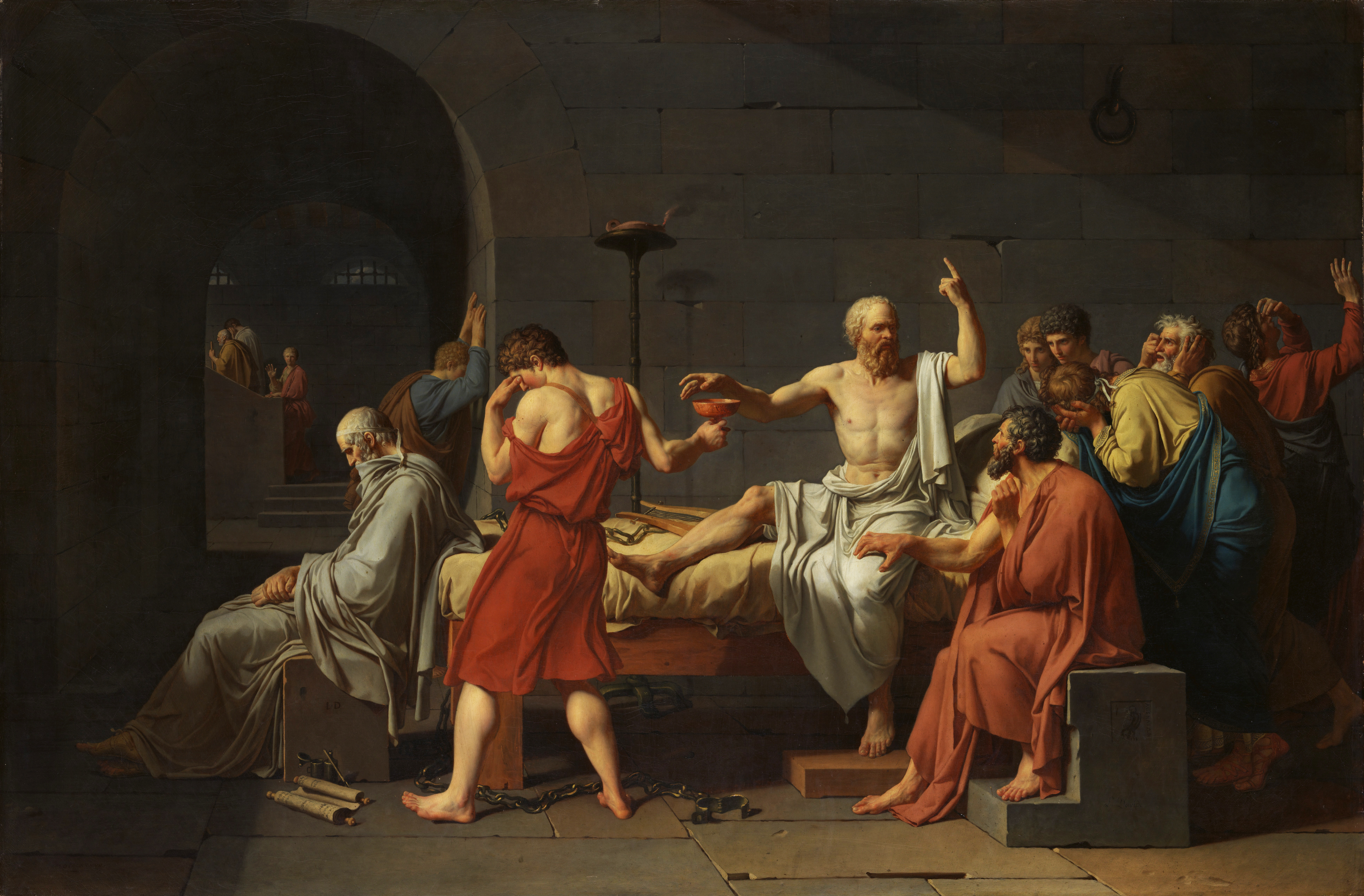|
Gynaeceum
In Ancient Greece, the ''gynaeceum'' (, ''gynaikeion'', from Ancient Greek , ''gynaikeia'': "part of the house reserved for the women"; literally "of or belonging to women, feminine") or the ''gynaeconitis'' (, ''gynaikōnitis'': "women's apartments in a house") was a building or the portion of a house reserved for women, generally the innermost apartment. In other words, a women's quarters, similar to the South Asian antahpura and Islamic South Asian zenana. The ''gynaeceum'' is the counterpart to the ''andrōn'', or male quarters. The married woman of the household would often join the unmarried women and the female slaves at night when she did not join her husband. The women spent most of their days in this area of the house. These rooms were more remote from those reserved for the men by placing them away from the streets and public areas of the house. When visitors were entertained the women were not present, but remained in this secluded portion of the house. A section of ... [...More Info...] [...Related Items...] OR: [Wikipedia] [Google] [Baidu] [Amazon] |
Oikos
''Oikos'' ( ; : ) was, in Ancient Greece, two related but distinct concepts: the family and the family's house. Its meaning shifted even within texts. The ''oikos'' was the basic unit of society in most Greek city-states. For regular Attic_Greek, Attic usage within the context of families, the ''oikos'' referred to a line of descent from father to son from generation to generation. Alternatively, as Aristotle used it in his ''Politics (Aristotle), Politics'', the term was sometimes used to refer to everybody living in a given house. Thus, the head of the ''oikos'', along with his immediate family and his slaves, would all be encompassed. Large ''oikoi'' also had farms that were usually tended by the slaves, which were also the basic agricultural unit of the Economy of ancient Greece, ancient Greek economy. House Traditional interpretations of the layout of the ''oikos'' in Classical Athens have divided into men's and women's spaces, with an area known as the ''gynaeceum, ... [...More Info...] [...Related Items...] OR: [Wikipedia] [Google] [Baidu] [Amazon] |
Andron (architecture)
''Andron'' ( Greek: , ''andrōn'') or ''andronitis'' (, ''andrōnitis'') is part of a Greek house that is reserved for men, as distinguished from the '' gynaeceum'' (, ''gynaikeion''), the women's quarters. The ''andrōn'' was used for entertaining male guests. For this purpose the room held couches, usually an odd number to allow space for the door, tables which could be tucked under the couches, artwork and any other necessary paraphernalia. Not all classical Greek houses were large enough to have a dedicated ''andrōn'', and even those that did might have used the room for mixed-gendered events and women receiving female guests, as well as men hosting symposia. In excavations at Olynthus, rooms identified as ''andrōnes'' contained items identified with female activities, as in the rest of the house. The definition of ''andrōn'' changed from Ancient Greek literature of Homer to the Latin of Vitruvius. Vitruvius explains some of the changes in Book 6 of ''De architectura ... [...More Info...] [...Related Items...] OR: [Wikipedia] [Google] [Baidu] [Amazon] |
Gynoecium
Gynoecium (; ; : gynoecia) is most commonly used as a collective term for the parts of a flower that produce ovules and ultimately develop into the fruit and seeds. The gynoecium is the innermost whorl (botany), whorl of a flower; it consists of (one or more) ''#Pistil, pistils'' and is typically surrounded by the pollen-producing plant reproductive morphology, reproductive organs, the stamens, collectively called the androecium. The gynoecium is often referred to as the "female" portion of the flower, although rather than directly producing female gametes (i.e. egg cells), the gynoecium produces megaspores, each of which develops into a female gametophyte which then produces egg cells. The term gynoecium is also used by botanists to refer to a cluster of archegonia and any associated modified leaves or stems present on a gametophyte shoot in mosses, Marchantiophyta, liverworts, and hornworts. The corresponding terms for the male parts of those plants are clusters of antheridiu ... [...More Info...] [...Related Items...] OR: [Wikipedia] [Google] [Baidu] [Amazon] |
Symposium
In Ancient Greece, the symposium (, ''sympósion'', from συμπίνειν, ''sympínein'', 'to drink together') was the part of a banquet that took place after the meal, when drinking for pleasure was accompanied by music, dancing, recitals, or conversation.Peter Garnsey, ''Food and Society in Classical Antiquity'' (Cambridge University Press, 1999), p. 13online Sara Elise Phang, ''Roman Military Service: Ideologies of Discipline in the Late Republic and Early Principate'' (Cambridge University Press, 2008), pp. 263–264. Literary works that describe or take place at a symposium include two Socratic dialogues, Plato's '' Symposium'' and Xenophon's '' Symposium'', as well as a number of Greek poems, such as the elegies of Theognis of Megara. Symposia are depicted in Greek and Etruscan art that shows similar scenes. In modern usage, it has come to mean an academic conference or meeting, such as a scientific conference. The Latin equivalent of a Greek symposium in Roman s ... [...More Info...] [...Related Items...] OR: [Wikipedia] [Google] [Baidu] [Amazon] |
Classical Greece
Classical Greece was a period of around 200 years (the 5th and 4th centuries BC) in ancient Greece,The "Classical Age" is "the modern designation of the period from about 500 B.C. to the death of Alexander the Great in 323 B.C." ( Thomas R. Martin, ''Ancient Greece'', Yale University Press, 1996, p. 94). marked by much of the eastern Aegean and northern regions of Greek culture (such as Ionia and Macedonia) gaining increased autonomy from the Persian Empire; the peak flourishing of democratic Athens; the First and Second Peloponnesian Wars; the Spartan and then Theban hegemonies; and the expansion of Macedonia under Philip II. Much of the early defining mathematics, science, artistic thought (architecture, sculpture), theatre, literature, philosophy, and politics of Western civilization derives from this period of Greek history, which had a powerful influence on the later Roman Empire. Part of the broader era of classical antiquity, the classical Greek era ended after ... [...More Info...] [...Related Items...] OR: [Wikipedia] [Google] [Baidu] [Amazon] |
Megaron
The ''megaron'' (; , , : ''megara'' ) was the great hall in very early Mycenae, Mycenean and Ancient Greece, ancient Greek palace complexes. Architecturally, it was a rectangular hall that was supported by four columns, fronted by an open, two-columned portico, and had a central, open hearth that vented though an Oculus (architecture), oculus in the roof. The ''megaron'' also contained the Throne room, throne-room of the ''Anax, wanax'', or Mycenaean ruler, whose throne was located in the main room with the central hearth. Similar architecture is found in the Ancient Near East, though the presence of the open portico, generally supported by columns, is particular to the Aegean civilization, Aegean. ''Megara'' are sometimes referred to as "long-rooms", as defined by their rectangular (non-square) shape and the position of their entrances, which are always along the shorter wall so that the depth of the space is larger than the width.. There were often many rooms around the centra ... [...More Info...] [...Related Items...] OR: [Wikipedia] [Google] [Baidu] [Amazon] |
Private Sphere
The private sphere is the complement or opposite to the public sphere. The private sphere is a certain sector of societal life in which an individual enjoys a degree of authority and tradition, unhampered by interventions from governmental, economic or other institutions. Examples of the private sphere are high society, religion, sex, family and home. In public-sphere theory, on the bourgeois model, the private sphere is that domain of one's life in which one works for oneself. In that domain, people work, exchange goods, and maintain their families; it is therefore, in that sense, separate from the rest of society. Shifting boundaries The parameters separating public and private spheres are not fixed but vary both in (cultural) space and in time. In the classical world, economic life was the prerogative of the household, only matters which could not be dealt with by the household alone entered the public realm of the polis. In the modern world, the public economy permeates the h ... [...More Info...] [...Related Items...] OR: [Wikipedia] [Google] [Baidu] [Amazon] |
Megaron
The ''megaron'' (; , , : ''megara'' ) was the great hall in very early Mycenae, Mycenean and Ancient Greece, ancient Greek palace complexes. Architecturally, it was a rectangular hall that was supported by four columns, fronted by an open, two-columned portico, and had a central, open hearth that vented though an Oculus (architecture), oculus in the roof. The ''megaron'' also contained the Throne room, throne-room of the ''Anax, wanax'', or Mycenaean ruler, whose throne was located in the main room with the central hearth. Similar architecture is found in the Ancient Near East, though the presence of the open portico, generally supported by columns, is particular to the Aegean civilization, Aegean. ''Megara'' are sometimes referred to as "long-rooms", as defined by their rectangular (non-square) shape and the position of their entrances, which are always along the shorter wall so that the depth of the space is larger than the width.. There were often many rooms around the centra ... [...More Info...] [...Related Items...] OR: [Wikipedia] [Google] [Baidu] [Amazon] |
Socrates
Socrates (; ; – 399 BC) was a Ancient Greek philosophy, Greek philosopher from Classical Athens, Athens who is credited as the founder of Western philosophy and as among the first moral philosophers of the Ethics, ethical tradition of thought. An enigmatic figure, Socrates authored no texts and is known mainly through the posthumous accounts of classical writers, particularly his students Plato and Xenophon. These accounts are written as dialogues, in which Socrates and his interlocutors examine a subject in the style of question and answer; they gave rise to the Socratic dialogue literary genre. Contradictory accounts of Socrates make a reconstruction of his philosophy nearly impossible, a situation known as the Socratic problem. Socrates was a polarizing figure in Athenian society. In 399 BC, he was accused of Asebeia, impiety and corrupting the youth. After Trial of Socrates, a trial that lasted a day, he was sentenced to death. He spent his last day in prison ... [...More Info...] [...Related Items...] OR: [Wikipedia] [Google] [Baidu] [Amazon] |






